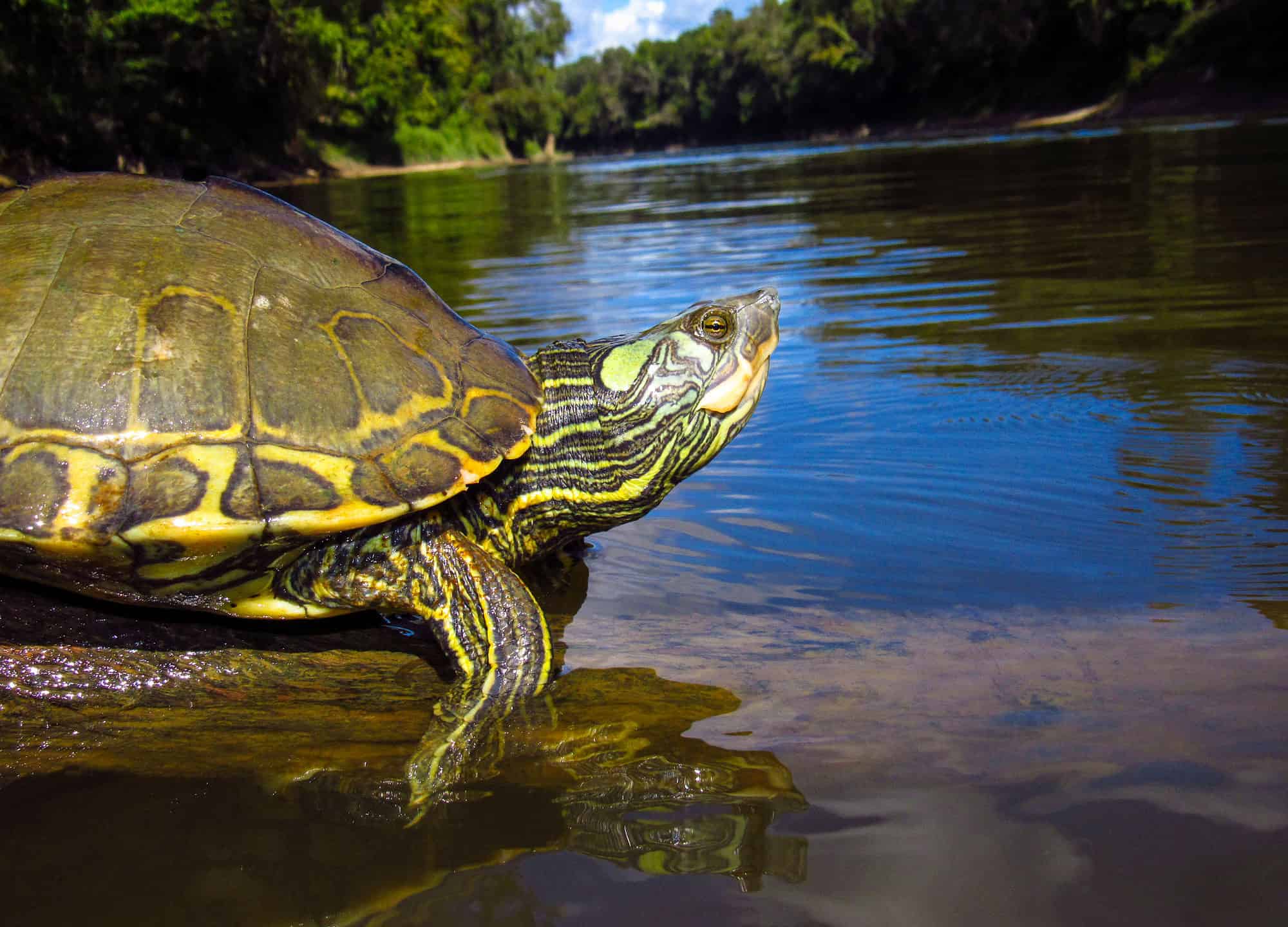Continue reading for our analysis...

In the wild, it’s up to each animal to learn to survive. There’s often competition between species when it comes to finding food. Luckily, the closer the animal is to civilization, the easier it is for them to find food.
While we think of many creatures, such as raccoons, shuffling through garbage cans, other animals will find themselves being handfed by humans. It is never suggested that we feed wild animals, as they can become accustomed to it and potentially become violent when near humans.
A Turtle Risks Its Life For a Chicken Wing
An individual filmed themselves feeding the wildlife near their home. In a swampy area, we can see a giant crocodile being fed chicken wings. Yes, you read that right! As the person continues to throw these wings into the water, a turtle shows up out of nowhere!
Turtles are edible to crocodiles and alligators. When they are hungry and spot a chance to get a quick meal, they will occasionally pursue turtles. Smaller turtles that fit in crocodile mouths are preferred over larger ones that they have to work for.
Crocodiles and alligators have the strongest bite of any animal. Throughout the beginning of time, people have feared their bite because they are an unrelenting force of nature. Turtles, which are found in the same wetlands and marshland as alligators and crocodiles, sometimes are in the wrong place at the wrong time.
Showing You Who’s Boss
The individual feeding the ancient reptiles tosses in a chicken wing when suddenly, the turtle nudges its way directly in front of the crocodile’s powerful jaw. The shelled creature starts nibbling on the tasty bite, claiming its victory.
We can see the crocodile move its head side-to-side, almost as if it’s disoriented. Thankfully, the croc wasn’t craving turtle that day and they both were able to enjoy some delicious human food without getting hurt.
Can Crocodiles Bite Through Turtle Shells?
Despite the turtle’s hard shell, a crocodile can bite with a force of 3,700 pounds per square inch (psi), which is more than enough to penetrate the turtle’s shell. The turtles will, regrettably, be eaten in a matter of minutes.
Turtles can withstand 200 times their natural weight in pressure or over 1000 pounds per square inch. But, even with it, they won’t be able to protect themselves from a crocodile’s dangerous bite.

Crocodile in water with its mouth gaping open
©Volodymyr Burdiak/Shutterstock.com
The shells of turtles can be ingested by crocodiles, despite being made out of tough material. It is made up of a vast range of substances, the bulk of which is keratin, the same material that makes up hair and nails.
This substance can be metabolized by crocodiles, who can also do it with other materials like bones. The result of crocodile hearts’ digestion of deoxygenated blood is fed to their stomachs.
This blood induces the creation of a sizable amount of acidic gastric juice in the gut because it has a high percentage of acidic carbon dioxide. Crocodiles have the capacity to produce stomach acids that are so strong that they can dissolve bone.
Thank you for reading! Have some feedback for us? Contact the AZ Animals editorial team.






